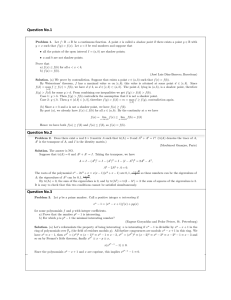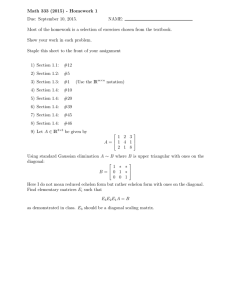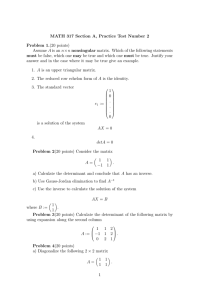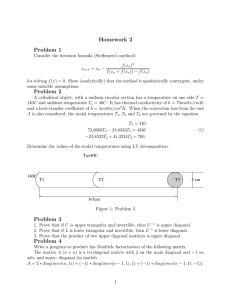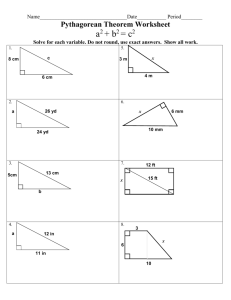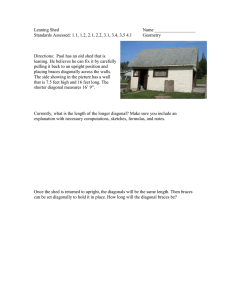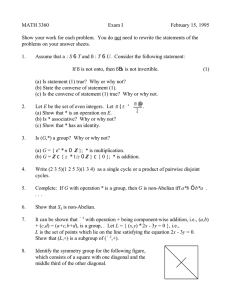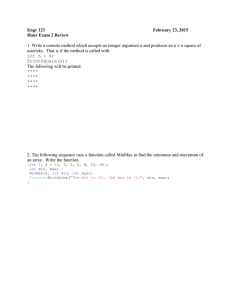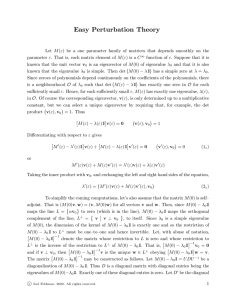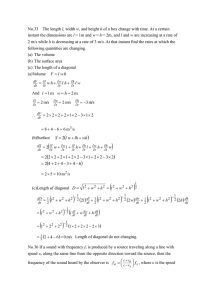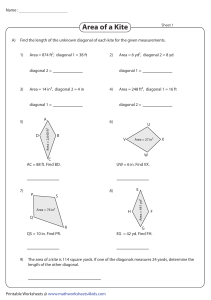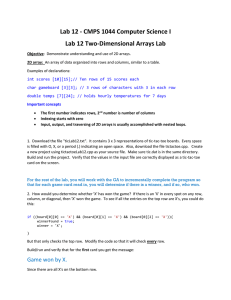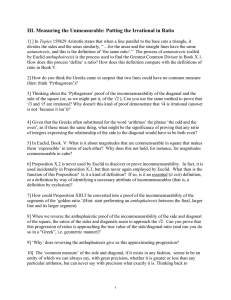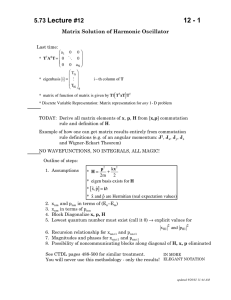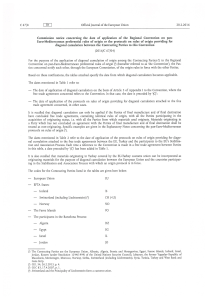7,…,0,1,…,6 Array size -
advertisement
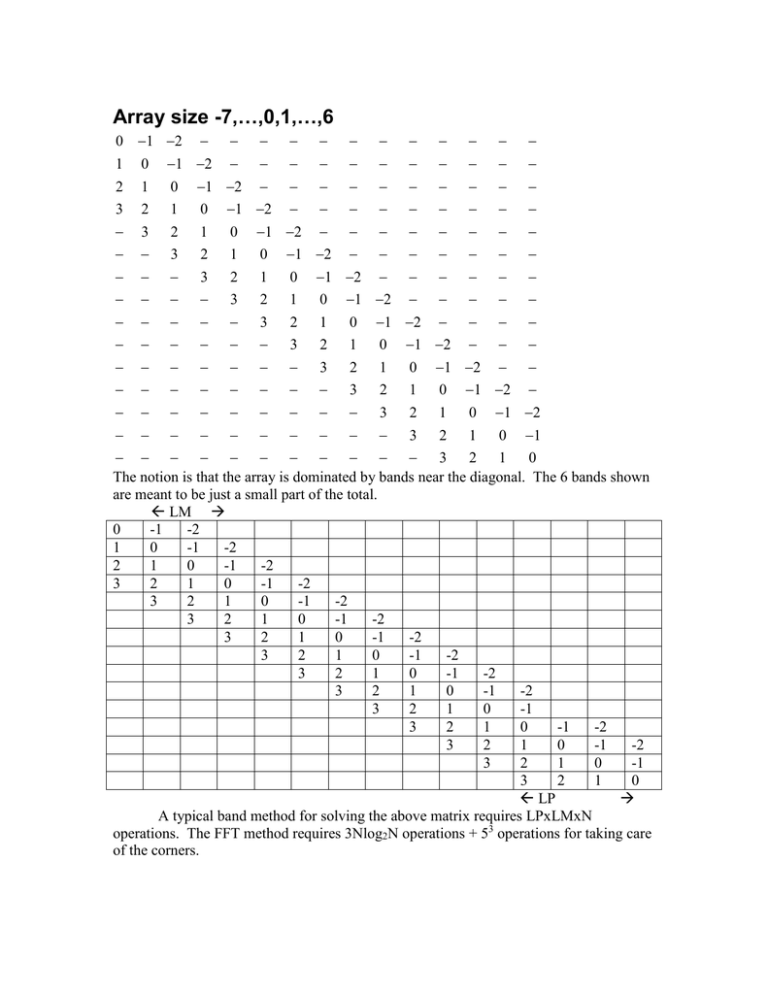
Array size -7,…,0,1,…,6 0 1 2 1 2 0 1 1 2 0 1 2 3 2 3 1 2 0 1 1 2 0 1 2 3 2 3 1 2 0 1 1 2 0 1 2 3 2 3 1 2 0 1 1 2 0 1 2 3 2 3 1 2 0 1 1 2 0 1 2 3 2 3 1 2 0 1 1 2 0 1 2 3 2 1 0 1 3 2 1 0 The notion is that the array is dominated by bands near the diagonal. The 6 bands shown are meant to be just a small part of the total. LM 0 -1 -2 1 0 -1 -2 2 1 0 -1 -2 3 2 1 0 -1 -2 3 2 1 0 -1 -2 3 2 1 0 -1 -2 3 2 1 0 -1 -2 3 2 1 0 -1 -2 3 2 1 0 -1 -2 3 2 1 0 -1 -2 3 2 1 0 -1 3 2 1 0 -1 -2 3 2 1 0 -1 -2 3 2 1 0 -1 3 2 1 0 LP A typical band method for solving the above matrix requires LPxLMxN operations. The FFT method requires 3Nlog2N operations + 53 operations for taking care of the corners. W 0 W 1 W 1 W 0 W L W L W 0 W 0 W L W 0 W 1 W L W 1 W 0 Gauss elimination starts at the upper left and uses W[0] = A0,0 to remove the first term from the next L for\bgauelim.for based on for\tgaussj\cgauelim.for for\bgauelim.wpj Code with A and Ap is in for\bgaulimt.zip. The final code is in for\bgauelim.zip. This code uses a packed matrix where A(I,J) Ap(I,J-I). It has no pivoting. It was tested on 4000 x 82 (41+40+1) arrays. For the element next to the diagonal equal to 30% of the diagonal there was a naïve failure rate of 1 inversion out of 10. For larger diagonals the rate went down.

